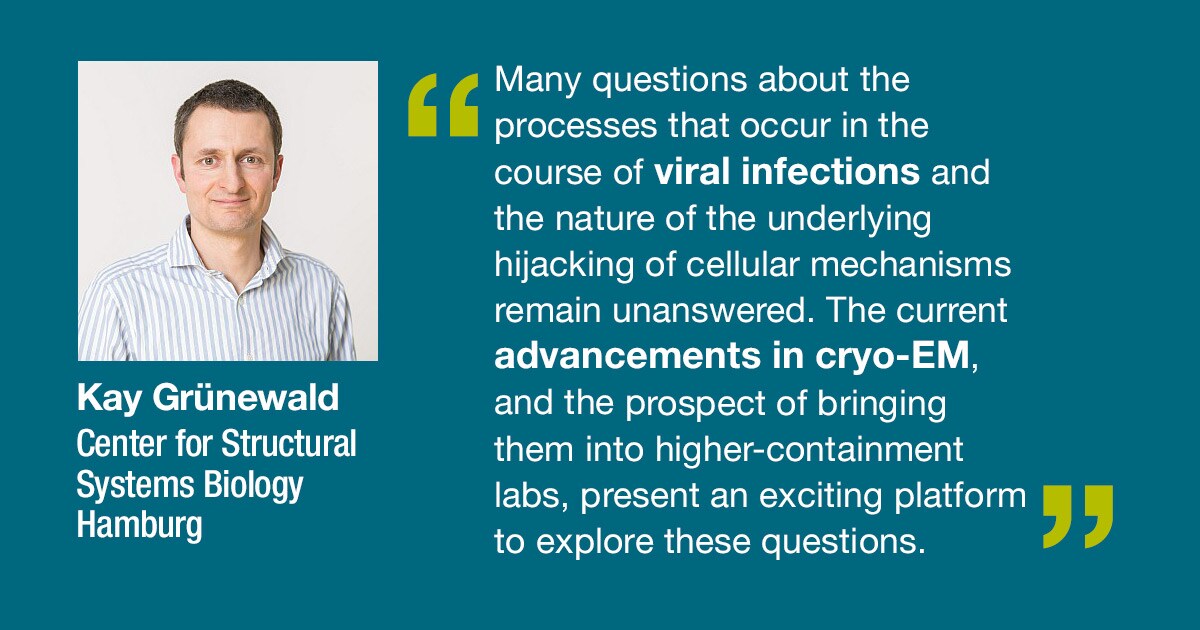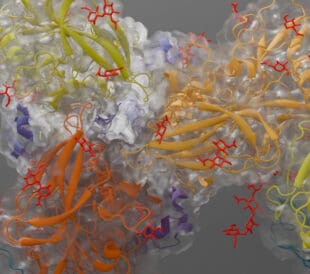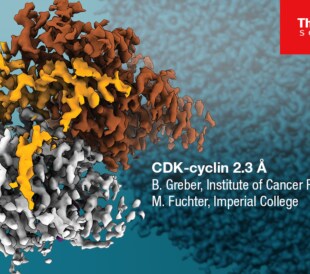Pathogenic virus research: unanswered questions
Cryo-electron microscopy (cryo-EM) has been used to study viral pathogens for more than 20 years, resolving the structures of viruses such as Zika, Ebola, HIV, and coronaviruses.
During the COVID-19 pandemic, cryo-EM played a pivotal role in accelerating vaccine development and antiviral drug discovery for this newly emerging pathogen.
Despite the achievements of virus research, many viral pathogens have yet to be studied, and questions about their behavior remain unanswered. Structural virology provides critical insights into virus morphology, life cycle, and interactions with host cells, enabling researchers to address these fundamental questions.
Furthering the scope of structural virology
Presently, only few high-end cryo-EM instruments are available in biosafety level 3 labs. This means structural virology research is often restricted to isolated proteins, inactivated samples or substituted non-risk model systems—in other words, those deemed safe for lower biosafety environments.
Yet, scientists around the world have an increasing desire to study viral pathogens in their native state.
Therefore, we’ve set out to offer solutions that will allow cryo-EM installations in higher-level biosafety facilities (e.g., biosafety level 3) — to broaden the scope of samples that can be worked on while assuring the performance and serviceability of the microscopes.

Our new 60°C heat decontamination solution for the Krios G4 Cryo-TEM
We have a long history of working with scientists to create customized instruments that support their research endeavors in the field of structural virology.
Over the years, we have also adapted our protocols, processes, and training to support the operation and service of our instruments in biosafety level 1, 2, and 3 environments.
In 2019, we saw our very own Applications Development Laboratory in Brno, Czech Republic certified for biosafety level 2 operation. This lab is where our team develops the cryo-EM workflow, from sample preparation to vitrification and imaging. Creating and running our technology in a biosafety environment demonstrates our commitment to R&D and, more importantly, to collaborating with scientists to advance cryo-EM technology and expand its use.
Building on this expertise and given the heightened interest in bringing cryo-EM into higher-level biosafety labs, we are announcing our first dedicated solution for whole virus research: the heat decontamination solution for the Thermo Scientific Krios G4 Cryo-TEM heats all components within the microscope enclosure to at least 60°C for a prescribed amount of time. This enables scientists to perform cryo-EM experiments on samples confined to higher-level biosafety facilities (e.g., biosafety level 3) that are susceptible to decontamination by heating to 60°C.
Additionally, this solution contains components to prevent aerosol release and a second control station to control the microscope from the outside of the biosafety lab.
Finally, we can offer our tailored service solutions, leveraging our remote diagnostics, repair capabilities and specially trained engineers for on-site service.

What’s next for structural virology?
Our commitment to making the world healthier, cleaner, and safer is evident—and very much needed—now, more than ever.
I am deeply inspired by how the global research community has collectively risen to the challenge imposed by the pandemic. Yet, the best part about this community is that they were preparing for this moment well in advance, having conducted seminal research to understand the biology of SARS-CoV-2 decades before its onset. Though it’s difficult to say during a pandemic that we must prepare for the next one, it is in fact how we must think.
This year, we’ll begin by offering our 60°C heat decontamination solution for the Krios Cryo-TEM in higher biosafety level facilities.
Though we’re proud to introduce it as our first, this is only the start of realizing a vision and roadmap to bring the complete in-situ cryo-electron tomography (cryo-ET) workflow to biosafety level 3 facilities.
Download our Ebook: Solving structural puzzles in virology with cryo-EM >>
//
Steve Reyntjens is a Senior Director of product marketing at Thermo Fisher Scientific




Leave a Reply